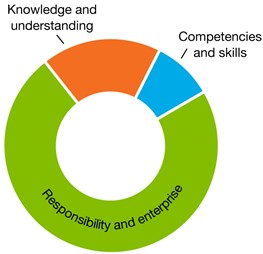Explore content
Typically, by the end of Year 2, students:
Understand computer mediated communications
understand that computer mediated communications may be received later by the receiver
Identify the impacts of ICT in society
identify how ICT is used at home and at school
Typically, by the end of Year 2, students:
Select and evaluate data and information
explain the usefulness of located data or information
Typically, by the end of Year 2, students:
Recognise intellectual property
recognise ownership of digital products that others produce and that what they create or provide can be used or misused by others
Apply digital information security practices
follow class rules about applying selected standard guidelines and techniques to secure digital information
Apply personal security protocols
follow class guidelines when sharing personal information and apply basic social protocols when using ICT to communicate with known audiences
Define and plan information searches
use ICT to identify, record and classify textual and graphic information to show what is known and what needs to be investigated
Locate, generate and access data and information
locate information from a given set of digital sources
Generate ideas, plans and processes
use ICT to prepare simple plans to find solutions or answers to questions
Generate solutions to challenges and learning area tasks
experiment with ICT as a creative tool to generate simple solutions, modifications or data representations for particular audiences or purposes
Collaborate, share and exchange
use purposefully selected ICT tools safely to share and exchange information with appropriate local audiences


